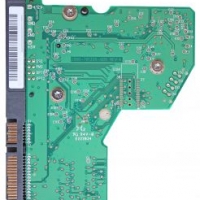World’s Fastest Supercomputer Goes Obsolete after Five Years

How’s this for a testament to the transience of modern technology? The world’s fastest supercomputer, fewer than five years ago, was decommissioned on March 31, 2013, and is set to be dismantled because its technology is obsolete. Even though the computer, called Roadrunner, is still the 22nd fastest computer in the world, it lacks the energy efficiency needed to make the power bill worth it.
Roadrunner made history in May 2008 when it became the first supercomputer to hit one petaflop, which equates to one quadrillion floating-point operations per second. Built by IBM at a cost of more than $120 million for the US Department of Energy at Los Alamos National Laboratory in New Mexico, Roadrunner was used to model the decay of the US nuclear weapons stockpile.
Roadrunner’s design was unique, a hybrid that combined general-purpose AMD Opteron processors with another processor called the PowerXcell 8i (called a “Cell”), an enhanced version of the specialized processor designed for the Sony Playstation 3. The Cell acted as a computational accelerator, taking on the most computationally intense parts of a calculation, while the AMD processors handled basic tasks.
Roadrunner was fast—and efficient—at the time. But staying on top in the world of computing is about as easy as balancing on a pedestal made of Jello. Roadrunner used 2,345 kilowatts to hit 1.042 petaflops (444 megaflops per watt). By contrast, Titan, the world’s fastest supercomputer as of November 2012, consumes 8,209 kilowatts to produce 17.6 petaflops (2,143 megaflops per watt)—almost five times more efficient than Roadrunner.
Accounting for cooling and other costs and a rate of about $0.07/kWh, Roadrunner likely costs around $300 per hour to run vs. Titan’s $60 per hour. If both computers were running 24/7 for a year, Roadrunner would cost $2.6 million to run; Titan would only cost $525,000. Cielo, the supercomputer replacing Roadrunner at Los Alamos, ranks eighteenth in the world of fastest supercomputers. Cielo is not a substantially faster platform but a smaller one, taking up about half the square footage of Roadrunner, and a cheaper one at about $54 million.
If history predicts the future, Roadrunner likely wouldn’t have to wait long to get vindication for being overtaken; Titan and similar supercomputers will probably get lapped by exascale computers around 2020. Under development by the Department of Energy, exascale architecture would bring high-performance computing into a range 1,000 times faster than a petaflop.
Too bad Roadrunner won’t live to see it. Because Roadrunner worked on classified calculations, most of its 296 server racks with 122,400 processor cores and 104 terabytes of memory will be shredded to bits after it is dismantled.

